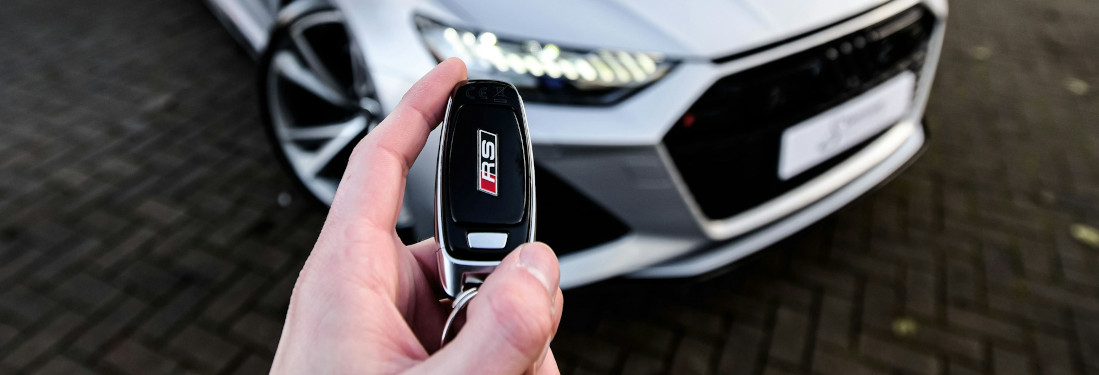Car Buying Guide
How to transfer car ownership: a full guide
By CheckAuto | Published on February 22, 2025

Starting the Vehicle Ownership Transfer Process
Whether you’re selling your car to a private buyer or passing it on to a family member, it’s crucial to notify the Driver and Vehicle Licensing Agency (DVLA) about the change. The simplest way to do this is by submitting the required information online through the DVLA website. Alternatively, you can complete the process by post.
Key Requirement: Make sure you have your V5C log book handy. This registration document is vital for initiating the transfer process.
Transferring Ownership Online
For a fast and efficient transfer, follow these steps:
- Have the Details Ready: Ensure you have your V5C log book and the new owner’s full details.
- Visit the DVLA Website: Navigate to the "Tell DVLA you've sold, transferred, or bought a vehicle" section.
- Enter the Information: Fill in the necessary details, including the new keeper’s name and address.
- Confirmation: Once submitted, you will receive an email confirmation, and the DVLA will update their records. The new owner should receive an updated V5C within a few days.
Transferring Ownership via Post
If you prefer a traditional approach, you can complete the transfer by mail. Here’s how:
- Gather New Owner Information: Have all the necessary details of the new keeper.
- Fill in the V5C: Complete the relevant sections on your V5C log book, ensuring both you and the new owner sign the declaration.
- Mail the Document: Send the completed V5C to the DVLA at the provided address (DVLA, Swansea, SA99 1BA).
- Temporary Proof: The buyer keeps the green "new keeper" slip, which acts as a temporary proof of ownership until the new V5C arrives, usually within 1 to 4 weeks.
Transferring Ownership to a Dealer
When selling to a motor trader, insurer, or dismantler, use the specific online section on the DVLA website:
- Access the Correct Section: Look for "Sold your vehicle to a motor trader, insurer or dismantler."
- Input the Required Details: Enter your vehicle’s information along with the dealer’s details.
- Submit and Confirm: After submission, you’ll receive an email confirmation, and the DVLA will update its records promptly.
The Importance of Timely Notification
It’s important to complete the transfer process as soon as the sale or transfer is finalised. Delays in notifying the DVLA can result in penalties and continued liability for taxes, as your name will remain associated with the vehicle.
Failing to update your details can lead to fines of up to £1,000!
When You Must Inform the DVLA:
- When buying or selling a vehicle
- After changing your name or address
- Following the passing of the vehicle owner
- When scrapping or exporting a vehicle
- When transferring the vehicle to a family member
- Whenever any significant change in vehicle details occurs
Understanding the Difference: Owner vs. Keeper
It’s essential to grasp the distinction between the “owner” and the “keeper” of a vehicle. In most cases, these roles are filled by the same person. However, situations can differ—such as when a company owns the vehicle and an employee uses it, or when a vehicle is leased, where the finance company remains the legal owner while the lessee is responsible for its day-to-day use.
- The Owner: Legally owns the vehicle.
- The Keeper: Responsible for insuring, taxing, and managing any fines or costs related to the vehicle.
You can verify if you are the owner or the keeper of a vehicle by checking the DVLA website for details about the vehicles registered under your name.
Enter Your Reg for a Full Vehicle History Check
Uncover critical history: write-offs, outstanding finance, stolen reports, mileage accuracy, and more.





Why a Vehicle History Report from Checkauto Matters
Before finalising any transfer, it’s wise to perform a thorough vehicle history check with Checkauto. A detailed report can reveal important information, such as the number of previous owners, potential discrepancies in mileage, records of past damage, or any theft alerts. Such insights can protect you from unexpected issues after the sale.
Remember: A comprehensive history report not only builds trust with potential buyers but also helps you avoid purchasing a vehicle with hidden defects. It’s a smart way to ensure that you’re making an informed decision, whether you’re selling or buying.
Transferring vehicle ownership doesn’t have to be a complicated process. With the right information and tools, you can navigate the necessary steps with confidence and ease. Always ensure that you update the DVLA promptly to avoid any legal or financial complications in the future.